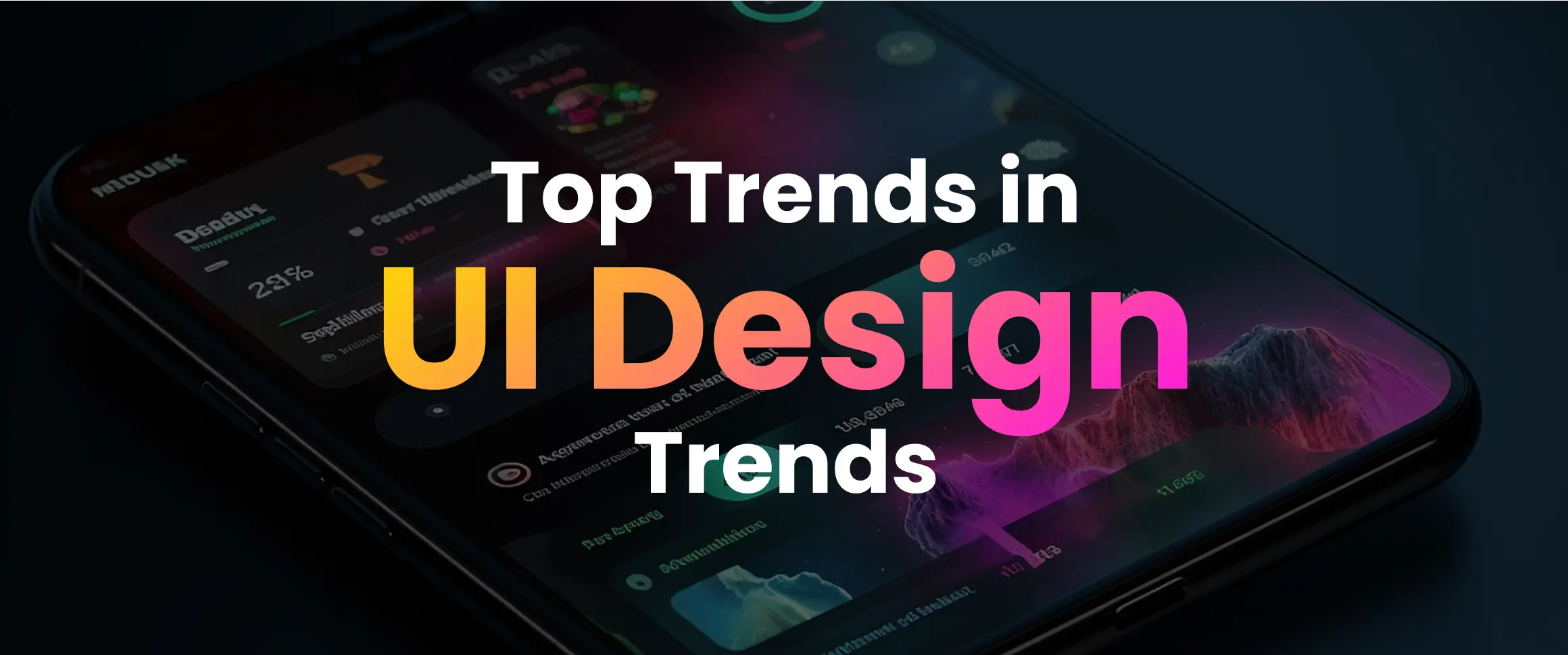Exploring the Future of User Interface: Top Trends in UI Design

Exploring the Future of User Interface: Top Trends in UI Design
User interface (UI) design is a constantly evolving field, with new trends emerging all the time. In this blog, we will explore some of the most notable UI trends of recent years and discuss their impact on how we interact with technology.
Minimalism
One of the biggest UI trends in recent years has been the rise of minimalism. This design philosophy emphasizes simplicity and functionality, using clean lines and minimal distractions to create a more streamlined user experience. Minimalist UI designs are often characterized by a focus on whitespace, typography, and simple graphics, and they tend to be highly responsive and adaptable to different devices and screen sizes. Some of the key benefits of minimalist UI design include faster loading times, easier navigation, and a more professional look and feel.
AI & ML
Another important UI trend is the increasing use of artificial intelligence (AI) and machine learning (ML) to create more personalized and intelligent user experiences. This can take many forms, such as chatbots and virtual assistants that can understand and respond to natural language queries or personalized recommendations based on users' past behavior. AI and ML can also be used to optimize UI design by analyzing user data and providing insights into how people are interacting with a particular product or service.
Micro-interactions
Another trend in UI design is the use of micro-interactions. These are small, focused interactions that are designed to serve a specific purpose, such as providing feedback or guiding a user through a task. Microinteractions can be found in many different contexts, from mobile app notifications to website loading indicators. By breaking down complex tasks into smaller, more manageable chunks, micro-interactions help to make the user experience more efficient and intuitive.
Flat Design
One of the most noticeable UI trends in recent years has been the rise of flat design. This design style is characterized by the use of simple, two-dimensional graphics and a focus on a minimalistic, intuitive layout. Flat design has become popular in part because it is easy to implement across a range of devices, and it also tends to be more visually appealing and modern-looking. However, flat design has also been criticized for lacking depth and dimensionality, and some designers have started to incorporate more gradients, shadows, and other effects to add visual interest and depth to their designs.
Storytelling and Narrative Elements
Another UI trend that has gained traction in recent years is the use of storytelling and narrative elements in the design. This can include everything from engaging copy and imagery to interactive elements that help to guide users through a product or service. By using storytelling techniques, designers can create a more immersive and engaging user experience that helps to build a connection with the user and make a product or service more memorable.
Accessibility & Inclusive Design
One of the most important UI trends of recent years has been the focus on accessibility and inclusive design. This involves designing products and services that are usable and understandable by as many people as possible, regardless of their ability level or background. This can include things like using clear and concise language, providing alternatives to visual content, and designing interfaces that are easy to navigate using a keyboard or other assistive technology. By prioritizing accessibility, designers can create products and services that are more widely available and useful to a wider range of users.
Motion Design
One UI trend that has gained popularity in recent years is the use of motion design. This involves incorporating animation and other dynamic visual elements into the user interface to improve the user experience and add a sense of interactivity and engagement. Motion design can be used for a variety of purposes, such as providing feedback, enhancing the visual appeal of a product, or simply adding a touch of personality to an otherwise static interface. By using motion design, designers can create a more engaging and immersive user experience that helps to keep users engaged and interested. Additionally, motion design can also help to communicate complex ideas or concepts in a more visual and intuitive way. With the increasing use of motion design, designers have more tools at their disposal to create dynamic and engaging user interfaces that stand out from the competition.



